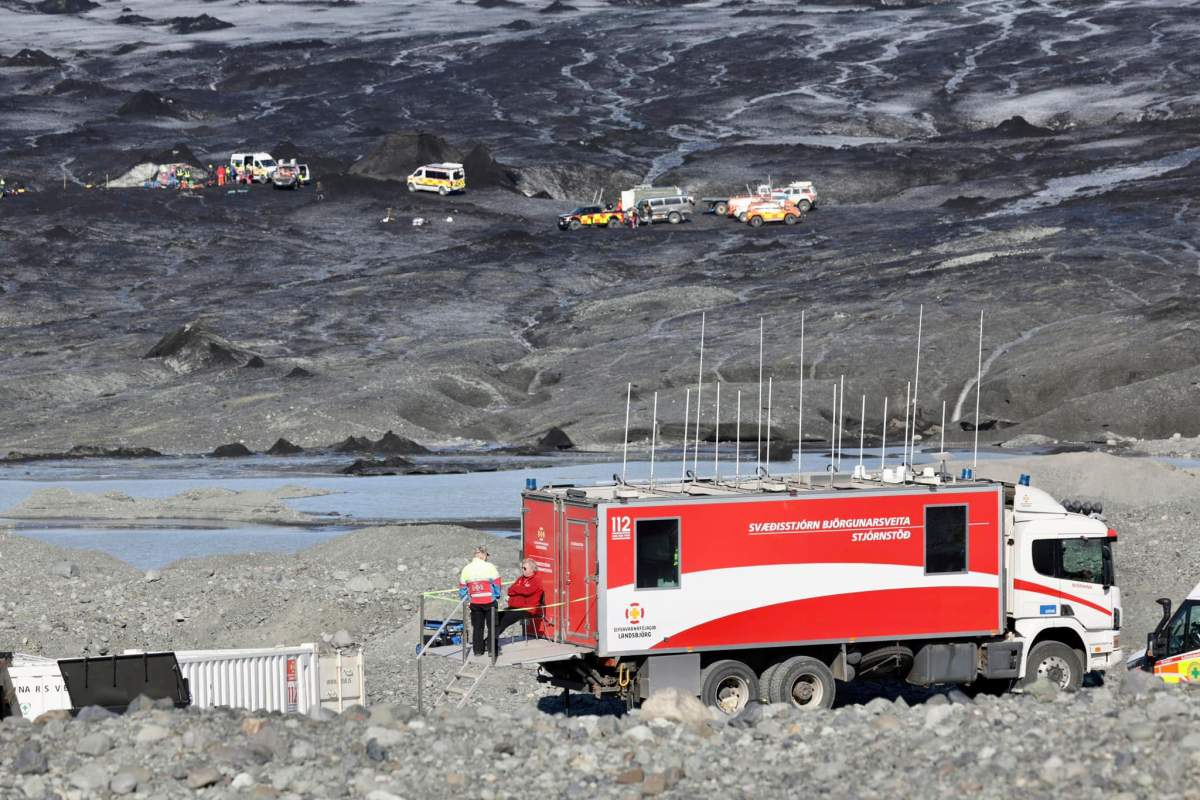A deadly ice cave collapse in Iceland has raised safety concerns and prompted calls for stricter rules for tourist expeditions that can be especially dangerous in the summer.

An American tourist died after an ice cave collapsed at the Breidamerkurjokull glacier in southeastern Iceland on Sunday. Another woman, also from the United States, was injured in the collapse.
Global Affairs Canada said it has no reports of any Canadian citizens being affected in the collapse.
“We are in contact with local authorities and stand ready to provide consular assistance to Canadian/Australian citizens if needed,” GAC spokesperson Kevin Sweet, told Global News in an email on Tuesday.
A large-scale search and rescue operation was called off on Monday after police determined that all 23 people on the ice cave tour were accounted for.
Einar Sigurdsson, who was among the first responders, said given the amount of ice that fell in the collapse it was a “big blessing” that only two people were struck.
The collapse happened in an ice canyon in one of the largest glaciers in Iceland.
The Association of Icelandic Mountain Guides called for a full investigation and tighter regulations on ice cave tours. Glacier trips during the warmer summer months can be very dangerous, the association said.

Get breaking National news
M Jackson, a glaciologist, said the accident was a “completely avoidable tragedy” and should be a “wake up call” for the country.
“The idea that companies are bringing tourists to this glacier in the summer to see ice caves is incredibly risky and dangerous,” Jackson told Global News in an interview.
Ice caves are holes and channels that go through the glacier, which become unstable in the summer, she said.
“Glaciers inherently are dangerous, and they’re only going to get more so with increasing climatic changes,” Jackson said.
“In the years to come, we’re going to see glaciers that are even more unstable, but at the same time, we might see more of these tragedies.”
She said the government should step in and regulate this form of tourism to prevent future tragedies.
“There cannot be ice cave tourism in the summer on glaciers.”

A NASA study published in the Science journal last year predicted that the world’s glaciers could lose as much as 40 per cent of their mass by 2100 due to climate change.
The Iceland accident has also cast a harsh light on an industry that promotes spectacular tours that can be more dangerous in the summer because glaciers shift and melt more quickly.
Sigurdsson, who is both a first responder and a mountain guide, said he doesn’t risk tours in many of the ice caves during the summer.
Yet he acknowledged the uncertainties and potential dangers involved in such expeditions.
“That is very hard to know everything that is going on in the ice. It’s really alive. I would say that is one of the more dangerous part of mountain guiding,” he told Global News in an interview.
Ice caves are a popular destination for visitors to Iceland, with tour operators offering customers the chance to “explore the insides of glaciers” and see the blue colour and “stunning patterns” in the ice.
Glaciers cover about 11 per cent of Iceland, an island nation in the north Atlantic that sits on the southern edge of the Arctic Circle.
The largest is Vatnajokull, which covers 7,900 square kilometers. Breidamerkurjokull is a tongue of Vatnajokull that ends at the Jokulsarlon Lagoon, where icebergs constantly break off from the glacier.
The glacier is about 300 kilometres from a volcano that erupted Friday on the Reykjanes Peninsula in southwestern Iceland.
— with files from Global News’ Eric Sorensen, Kam Razavi and The Associated Press










Comments